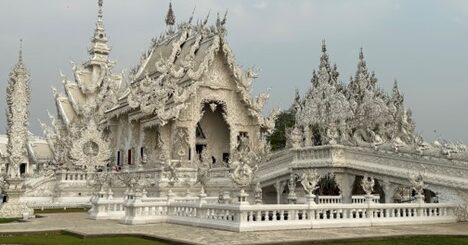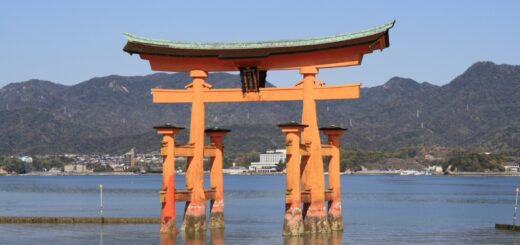Varanasi
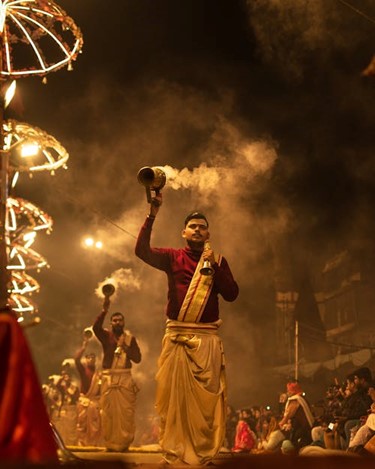
Travel Advice for Seniors: Varanasi
Varanasi is the spiritual center of India and is believed to have been founded by Lord Shiva in Hindu lore. There are over two thousand temples in Varanasi. Hindu pilgrims come from all over the country to bathe in the waters of the Ganges, “Mother River” and perform funeral rites. It is said that if you die in Varanasi that you can break the chain of birth and rebirth and achieve salvation.
While we had already planned to visit Delhi, Jaipur, Agra and Udaipur on our three-week tour of northern India, but we wanted to experience a bit more than the usual tourist stops. Varanasi provided a much deeper look into India.
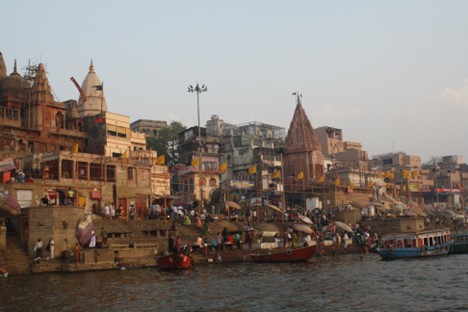
All pilgrims’ first stop is at the Ganges. The Ganges is considered a holy river in Hindu. The Ganges is lined with ghats, or terraced steps, where the pilgrims perform their rituals. The ghats also house several funerary establishments. The process of burial begins at the ghats on a wooden pyre. The body is cremated with the family surrounding the deceased and ends with the entire burned pyre being tilted into the Ganges.
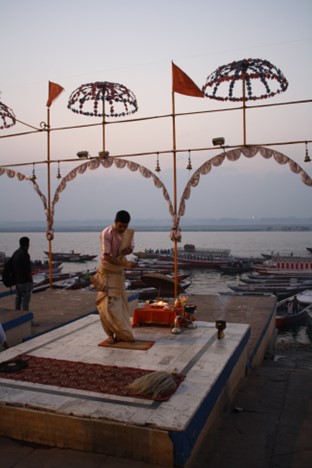
Alternatively, every evening there is a Garna Aarti ceremony held at the main (Dashaswamedh) ghat. The ceremony consists of several young men offering a series of gifts of light to the river seeking cleansing and purification. It is a beautiful and popular ceremony to watch. Note that there are several steps down to the viewing areas.
Our guide was an elderly lady who was a fountain of information. We had a lovely moment when we boarded our canoe and went out into the Ganges at sunrise. On the way to the canoe, we had stopped and bought an offering of a small woven basket with flowers and a small candle. As we sailed out into the Ganges, we lit the candles and sent our offerings sailing on the Ganges. Our guide sang a lovely prayer as the we sent our offerings away and watched the sunrise. It was a beautiful moment and captured the spirituality of Varanasi.
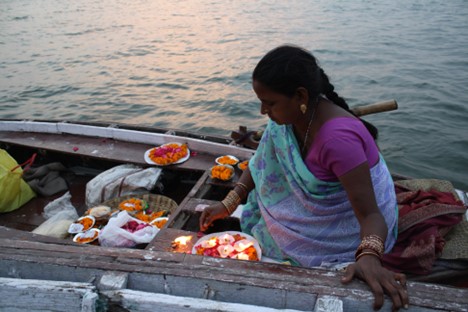
A word on Varanasi: This city, it is believed, was created by the Hindu good, Shiva, who rides on a bull. As such, cattle that no longer produce milk or reproduce are taken to Varanasi to return home to Shiva. The cattle in India are sacred and are not eaten. So, be aware that there are a great deal of cattle in Varanasi wandering around and especially be aware of where you are stepping and do not try to shoo them out of the way. It may also come as a bit of a culture shock that they do not appear to be very well fed and neither are the “neighborhood security dogs”, even though it is one of the tenants of Hinduism to care for these animals.
In addition to experiencing the Ganges at sunrise and sunset, between times we kept very busy. Bharat Kala Bhivan Museum is part of the Banaras Hindu University and has an impressive amount of historical Indian art and cultural items, including miniature paintings and sculptures.The museum has accessible parking, entrance, walkways, restroom but no elevator.
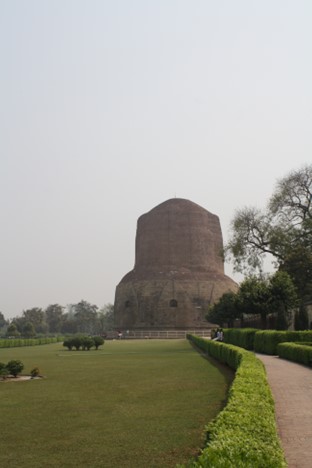
We also made an afternoon trip to Sarnath, which is a sacred location and pilgrimage site for Buddhists. This is where Gautama Buddha taught his first sermon after attaining enlightenment. Also in Sarnath, we visited the Dhamek Stupa, which marks the location of where the Buddha preached instructions to his first five disciples. Accessible entrance, parking and pathways.
Varanasi and nearby Sarnath are two very well-known religious pilgrimage sites and it was definitely worth a stop to get background information that would explain a great deal about India moving forward.
Where we stayed: Gateway Hotel Ganges Varanasi. Breakfast included. Nice hotel, convenient location. Accessible common areas.
How we got there: Flight from Kathmandu to Varanasi.This was part of a three week private tour through Nepal and India.
General Accessibility Information: See notes above. India is not known for accessibility, though they are making progress by introducing ramps at some major sights. Call in advance to verify and make specialty arrangements.See our sections on specialty apps and accessible travel for more on accessibility assistance.

